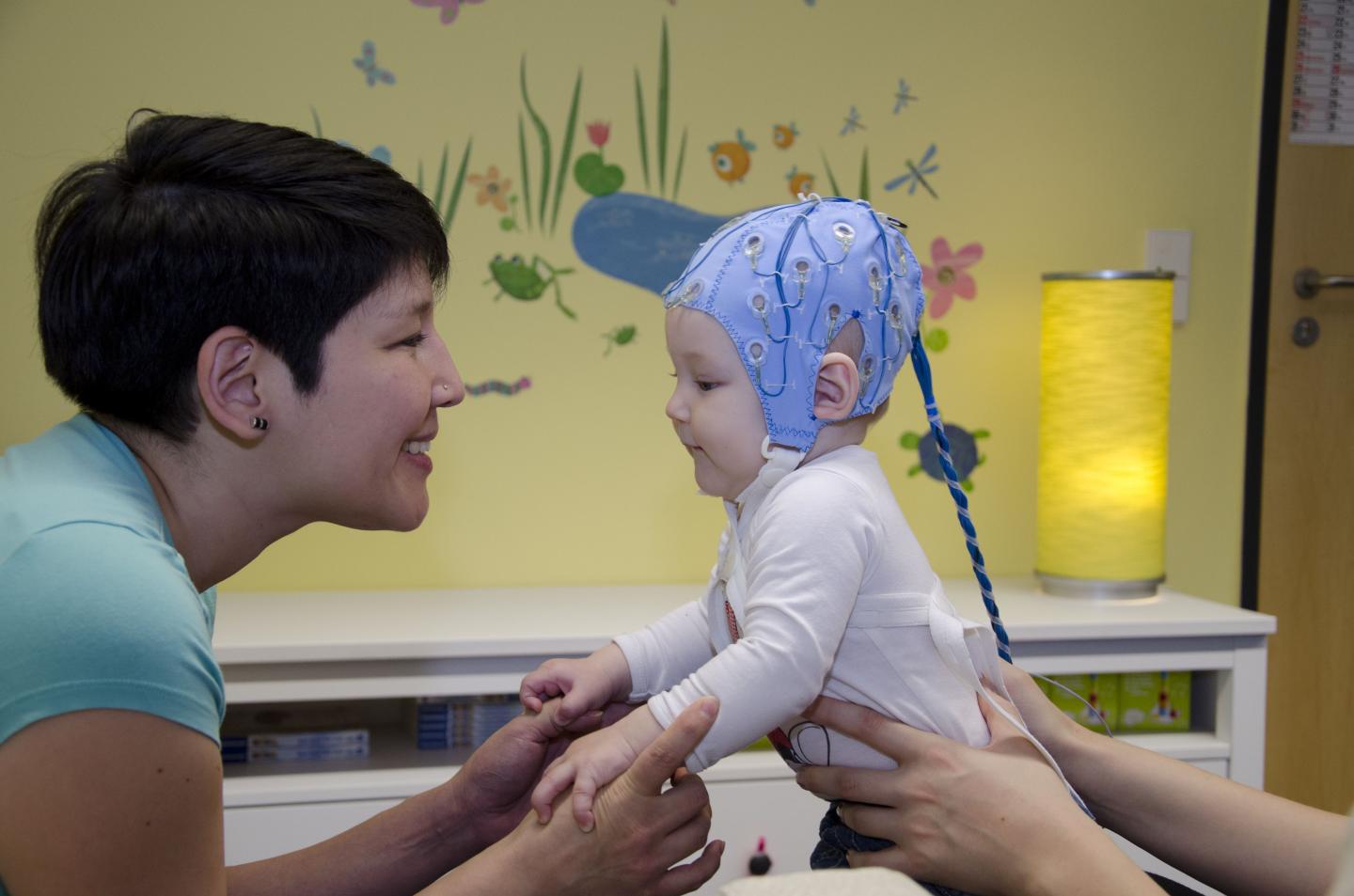
Babies, as anyone who has had one might have noticed, are not that good at stuff. They can’t talk to you, they suck on everything no matter what it’s supposed to be used for, they can’t run errands, they soil themselves. But they can recognize different facial expressions just from looking at someone’s eyes, apparently as early as seven months. How? It’s all to do with the whites of the eyes.
A new study out of the University of Virginia and that Max Planck Institute that was published online in the Proceedings of the National Academy of Sciences, found that babies respond differently to eyes alone, if the eyes were showing different expressions. “Their brains clearly responded to social cues conveyed through the eyes,” said Tobias Grossmann, one of the study’s authors, “indicating that even without conscious awareness, human infants are able to detect subtle social cues.”
Humans, it turns out, are the only primates in which the whites of the eye are visible. The amount of sclera, as the white is known, is often an indicator of the emotions of a person. Wide open eyes, with a lot of visible white, express surprise or fear. When people smile, on the other hand, their eyes often narrow, hiding the whites. Fellow humans use the eyes a lot to detect what a person is really feeling, which is why movie villains, prison guards, and Vogue editor Anna Wintour wear mirrored or dark glasses even inside and on overcast days. If people can’t see the whites of each other’s eyes, they’re not really communicating.
The sociologists were trying to establish how consciously or unconsciously humans respond to eye expressions, whether it’s learned behavior or innate to the human condition. So they hooked the babies up to shower cap like EEG devices that measure brain activity and showed them pictures of eyes for 50 milliseconds—way too short a time for the conscious brain of a baby of that age to have any idea of what was going on. Some of the eyes were wide open showing a lot of white, some were narrowly opened, some looked straight ahead, and some had an averted gaze.
The babies’ brains responded differently to each type. “This demonstrates that, like adults, infants are sensitive to eye expressions of fear and direction of focus, and that these responses operate without conscious awareness,” Grossmann said. “The existence of such brain mechanisms in infants likely provides a vital foundation for the development of social interactive skills in humans.”
The moral of the story is: you may want to ditch the mirrored sunglasses when playing with your baby. He or she would probably just suck on them anyway.
More Must-Reads from TIME
- Donald Trump Is TIME's 2024 Person of the Year
- Why We Chose Trump as Person of the Year
- Is Intermittent Fasting Good or Bad for You?
- The 100 Must-Read Books of 2024
- The 20 Best Christmas TV Episodes
- Column: If Optimism Feels Ridiculous Now, Try Hope
- The Future of Climate Action Is Trade Policy
- Merle Bombardieri Is Helping People Make the Baby Decision
Contact us at letters@time.com